DVLA business plan 2019 to 2020
Published 28 March 2019
0.1 Non-Executive Chair’s introduction
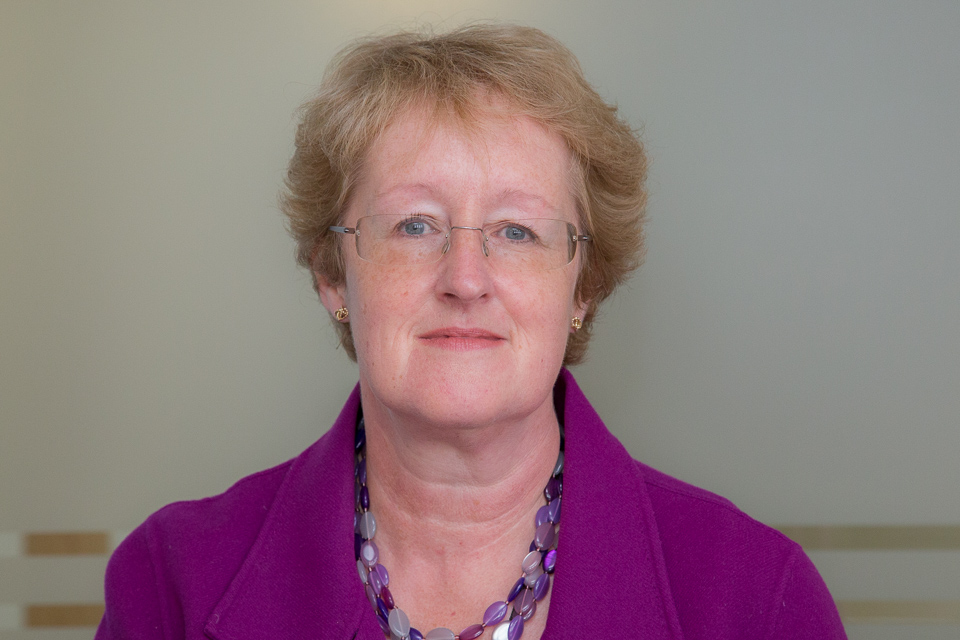
Welcome to our Business Plan for 2019-20, which sets out who we are, what we do and how we will measure our performance in the year ahead.
DVLA has a significant part to play in keeping our roads safe. We deal with many millions of customers every year and work hard to make sure that we get drivers and vehicles on the road as quickly and as safely as possible.
Good customer service is central to our success and is what people rightfully expect when they need to deal with us. We are proud to be in the top five public sector best in class organisations for customer service and will once again be aiming to retain our customer service excellence standard.
2019-20 will see work continue on transforming our services and modernising our estate. There is much work to do and I look forward to what is going to be a busy, successful and productive year.
Lesley Cowley OBE
Non-Executive Chair
March 2019
0.2 Chief Executive’s foreword

We are now in the third year of our strategic plan. This sets out our goal to get the right drivers and vehicles taxed and on the road as simply, safely and quickly as possible.
A huge amount of work to implement our strategic plan has already been done and the year ahead will see us further transform the technology that underpins our digital services. This element of our transformation journey is exciting, challenging and on a significant scale. The majority of this work in the coming year focuses on the underlying infrastructure so while it will not always be visible to our customers, it will pave the way for even better customer services in the future.
There will however be some key changes to public-facing services this year, including a more mobile-friendly personalised registrations service and a vastly improved digital tachograph service for operators of buses and lorries.
We are nothing without our staff, and we will continue to invest in our workforce. We will also be improving our internal IT systems. This will speed up processes and improve the tools available to staff, in turn improving the customer experience. We will also continue to modernise our estate which will lead to an even better working environment.
2019 is a landmark year for DVLA as we celebrate the 50th anniversary of the laying of the foundation stone at our Morriston site in Swansea. We take a great deal of pride in what we do and we are looking forward to marking the anniversary in June. The original 1965 report recommending the establishment of a new vehicle and driver licensing agency ‘centralised and with a computer installation’ was to enable efficient working on a national scale. DVLA has therefore always been at the forefront of digital, being one of the earliest adopters across government. Both the technology and our services have come a long way since the 1970s, culminating in our dealing with one billion transactions last year, 90% of which were done online.
I look forward to another exciting and challenging year ahead.
Julie Lennard
DVLA Chief Executive and Accounting Officer
March 2019
1. Who we are and what we do
Who we are
We’re an executive agency of the Department for Transport (DfT). Fifty years ago, on 18 June 1969, the foundation stone was laid on our main site in Swansea. This was the beginning of DVLA as we know it today. We opened for business after taking over responsibility for licensing drivers and vehicles from the local authorities. We are now one of the largest employers in South Wales with more than 5,500 staff.
Our core responsibilities are to maintain more than 48 million driver records and more than 40 million vehicle records and collect around £6 billion a year in Vehicle Excise Duty (VED).
Our goal is to get the right drivers and vehicles taxed and on the road, as simply, safely and efficiently as possible.
We’ve been through a radical process of change, moving away from a paper-based organisation to a modern and highly efficient business. Over the last decade we’ve expanded our digital services and are now a multi-award winning government organisation focused on developing excellent digital services for our customers.
We’re proud to be based in Wales and we work collaboratively with local schools, colleges, universities and other agencies to develop skills needed for our future.
What we do
Our services help customers manage their driving licences and vehicle tax online; they can tell us about a medical condition that may affect their driving; they can buy, assign and retain a personalised registration number and tell us they bought, sold or transferred their vehicle.
Keeping driver and vehicles records up to date is essential to staying compliant with the law and our online services make it quick and easy for customers to do this.
Our award-winning, multi-channel contact centre has more than 1,000 staff working together to provide a high quality service in a way that suits our customers. We’re available by phone, direct message, email and web chat.
We’re committed to making sure that customers who have a medical condition that may affect their driving, do the right thing by visiting their doctor and to tell us as soon as possible. Last year, we dealt with over 700,000 medical licensing applications. Our medical guidance, ‘Assessing fitness to drive’ is used by medical professionals when advising whether a patient is fit to drive. This is available online and updated twice a year.
Our customers are not just motorists. We work closely with our corporate partners which include trade associations, motoring organisations, the police, other agencies and relevant medical charities. Our relationships ensure that we continue to provide services that meet their needs as well as our own. We also work closely with other government departments to share best practice and knowledge, providing services that customers want.
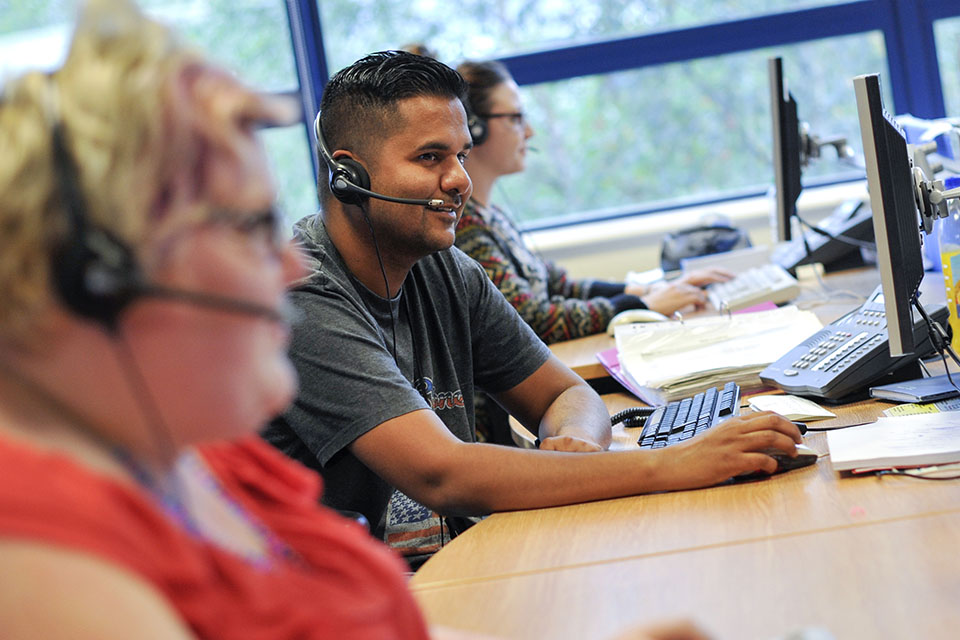
EU exit
The Motoring Agencies have played a key role in ensuring an orderly Exit from the EU and will continue to do so. The agencies have taken forward a wide range of workstreams to ensure that the UK is prepared for all possible eventualities. This work ensures that essential functions such as driver and vehicle licensing, operator licensing, and vehicle type approval can continue to run smoothly after the UK leaves the EU. DVLA are working closely with other agencies across Whitehall to ensure that effective solutions are implemented in these areas.
DVLA have taken forward provisions to ensure the services required of us are in place when the UK leaves the EU. These include a new service for trailer registration and an expanded over the counter service for issuing International Driving Permits which is being supplied as part of our existing contract with Post Office Ltd. We have made the necessary changes to make sure the legislative frameworks and policies are in place, as well as ensuring our business is prepared for the changes.
This plan should be seen as a statement of our plans at the time of publication and, as a result of EU Exit, it should be considered that some resources might need to be reprioritised and work streams adjusted, to meet future changes in demand.
2. Plans for 2019-20
| Strategic goals | DVLA measure | 2019 -20 |
|---|---|---|
| 1. Dynamic technology and services | 1.1 Complete the migration of tachograph services from our legacy platforms | March 2020 |
| 1.2 Migrate the current payment broker into UK-hosted cloud environments and integrate our payment broker to use the GOV.UK Pay platform | January 2020 | |
| 1.3 We will complete the first phase of a programme of work to implement processes and tooling that will enhance and accelerate our migration to a cloud first/IT programme | March 2020 | |
| 2. Hub for digital motoring | As part of our commitment to migrate away from our legacy systems and continue to transform our business we will: | |
| 2.1 Deliver an enhanced vehicle enquiry service to allow users to view tax, MOT and vehicle information through the existing web service and expanded use of the Application Programming Interface (API) |
July 2019 |
|
| 2.2 Develop and introduce a new drivers enquiry service for accessing driver information remotely using Open Source Landscape (OSL) technology | March 2020 | |
| 2.3 We will redesign our Personalised Registration sales website to improve accessibility and mobile compatibility, also meeting the government digital by default standard | March 2020 | |
| 2.4 We will significantly improve our internal systems to modernise our existing processes. Staff using these systems will benefit from more intuitive interaction that will be realised in leading to improved customer service | March 2020 | |
| 2.5 We will support the Department of Environment and Rural Affairs and DfT’s Joint Air Quality Unit by providing available vehicle data to enable the introduction of a national charging scheme for vehicles entering clean air zones | December 2019 | |
| 2.6 Our total digital and automated interactions will exceed 90% | March 2020 | |
| 3. Unrivalled safety, security and compliance | 3.1 We will optimise use of the new National Vehicle Enforcement Services contract to focus enforcement efforts on areas of higher evasion and persistent evaders whilst maintaining a consistent approach across the whole of the UK | March 2020 |
| 3.2 We will conclude medical cases, making a licensing decision within 90 days | 90% | |
| 4. Best in class customer service | 4.1 We will maintain our position in the top 5 public sector best in class organisations for customer service | March 2020 |
| 4.2 We will retain the Customer Service Excellence standard | Retain standard | |
| 4.3 We will retain the Customer Contact Association Global Standard 6 | Retain standard | |
| 4.4 We will deliver a: - driving licence in 5 working days - vocational driving licence in 5 working days - digital tachograph in 5 working days - vehicle registration certificate in 5 working days and - answer calls queued to an advisor in 5 minutes |
95% |
|
| 4.5 Customer complaints – reduce the number of cases that the Parliamentary and Health Service Ombudsman (PHSO) and Independent Complaints Advisor (ICA) uphold in favour of the customer, against the 2018-19 baseline |
5% |
|
| 4.6 IT resilience - we will provide planned customer availability of: - vehicle tax - vehicle management - personalised registration - driver licensing online services |
99.5% |
|
| 5. Financial responsibilities | 5.1 We will manage our Resource Departmental Expenditure Limit (DEL) total of the supplementary estimates within |
+/-10% |
| 6. Modern workplace and skills | 6.1 Reduce the number of days lost (by full time equivalents) through sick absence: - long term to 5.06 - short term to 3.23 |
March 2020 |
| 6.2 We will complete a programme of estates modernisation projects including: - floor refurbishments - energy and data centre resilience - catering facility improvements |
March 2020 |
2.1 Dynamic technology and services
We are at the forefront of public digital services with a take up rate of more than 90%.
This is the final year of our IT strategy 2017-20 and we have made significant progress in transforming our IT systems onto new cloud-based platforms.
Never static or still. A place for innovation and inspiration.
We have implemented a long term plan which will support our technical transformation, moving away from legacy systems which have grown organically over the last 30 years. The measures and milestones in this year’s business plan are aligned to the transformation.
The delivery of our technical transformation, requires a significant investment of resource and effort. To support this we have implemented a Centre of Digital Excellence and moved to a squad and product-based delivery structure with an integrated talent, attraction and growth model. We have also recruited 32 apprentices and 6 IT industry students, who are integrated in our squad teams. This provides on-the-job training, helping to establish the growth of the IT sector in Swansea.
To make sure our software teams are effective, we are starting a programme of work to provide our engineers with technical tools to support service and maintenance. We will build our systems to a common set of standards and automate our services where possible. We have system components and code that can be reused, making the engineering teams more efficient.
Maintaining and providing data is our business and demand for DVLA data is increasing. We need to make sure that our platforms can provide the data our customers and stakeholders need without compromising our core business activities. Moving vehicle enquiry services onto a scalable cloud platform will allow us to deliver a cost-effective and resilient service.
Tachographs
By March 2020, we will complete the migration of the tachograph driver, control and workshop card services from our legacy IT platforms onto a new open systems landscape. This will enable new GOV.UK services to be developed for tachograph driver card users to apply, renew and replace their tachograph cards online. This will digitise a service which is currently 100% paper-based, providing customers with a more efficient service, driven by user need. This will be the first fully transformed service in our portfolio.
2.2 Hub for digital motoring
Driver and vehicle enquiry services
Enhancing our driver and vehicle enquiry services using new technology platforms will allow us to provide more modern and flexible services which put the customer’s needs at the heart of our services. This will also contribute to reducing our overall ICT running costs in line with the Spending Review and our Strategic Plan 2017-20 by enabling the decommissioning of existing legacy enquiry services.
We will provide an enhanced vehicle enquiry service to allow users to view tax, MOT and vehicle information through the existing web service and expanded use of the Application Programming Interface (API), providing a consistently better service to customers. Our development of the Amazon Alexa and Google Home applications will continue to refine this service for use on different platforms when checking a vehicle’s tax status. These services use technology to view publicly available data in ways that work for different business models.
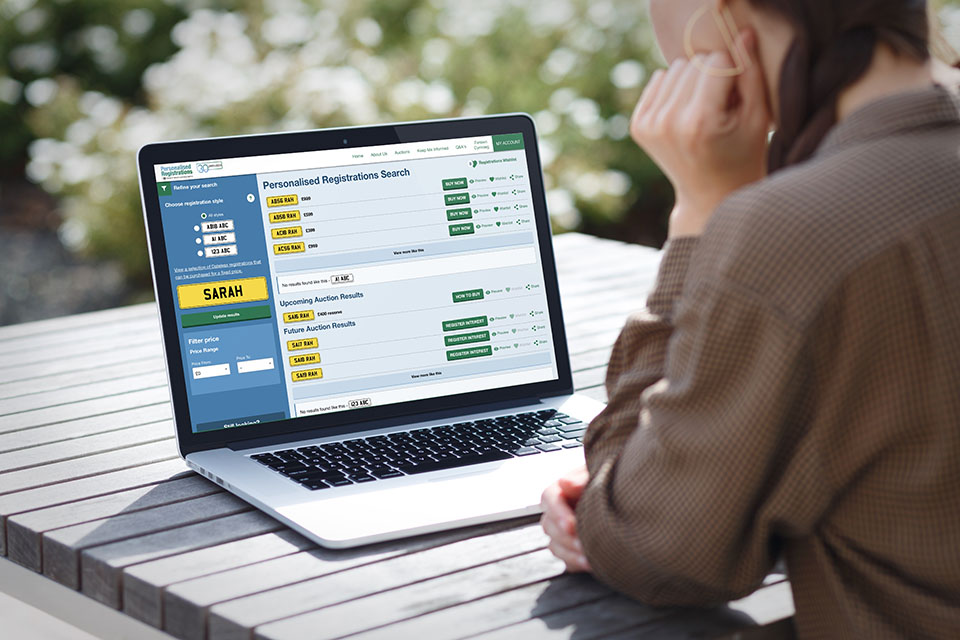
DVLA Personalised Registrations
Customers can buy personalised registrations using our online service or through one of our live or online auctions. We’ve sold over 5.7 million personalised registrations since the scheme started in 1989 and this has raised over £2.7 billion for HM Treasury. The year ahead is exciting as we redesign our sales website to improve the end to end customer journey including accessibility from a mobile device.
Staff hub
During the year we will improve and modernise our internal systems, making it easier and more efficient for our staff to deal with both customers and colleagues across the business. We will collect improved management and business information to help improve customer service.
Clean air
We will work with the Joint Air Quality Unit (JAQU) to support the design and implementation of the centralised digital infrastructure necessary to enable local authorities to deliver their charging clean air zones, including through participation in the project’s governance. This includes advising on the delivery of the vehicle checker system, working together to put the necessary data sharing agreements in place to underpin the calculations of compliance and advising on the technical approach for the payment system. We will work with JAQU to agree plans for the service to transition to DVLA as the future service owner.
Automated vehicles
We are working with DfT to support the automated vehicles insurance provisions within the new Automated and Electric Vehicles (AEV) Act, which forms part of the Government’s approach on Mobility as a Service and the wider Mobility Strategy. The intention will be to record the details of a vehicle’s automation or self-driving status, initially when the vehicle is first registered and then through the life of the vehicle. Discussions are ongoing with DfT to define the requirements of what data will be captured and when. We will work with DfT to help support the safe development and deployment of automated vehicles. The information will also need to be made available to insurance companies and consumers so they are clear about a vehicle’s insurance requirements.
2.3 Unrivalled safety, security and compliance
VED collection and evasion
We collect around £6 billion a year in vehicle tax for HM Treasury. We will continue to review our processes to make it easier for our customers to tax their vehicles on time using online services, by telephone or through a post office.
We remain committed to reducing the level of tax evasion. Our new national vehicle enforcement services contract will enable us to increase our enforcement efforts in the regions where vehicle tax evasion is highest whilst maintaining our enforcement activities across the UK. We will maximise the use of our own communication channels and where appropriate, paid for advertising, to remind motorists of their legal responsibilities.

Fitness to drive
On 22 November 2018, the government published its response to the Cycling and Walking Investment Strategy Safety Review which included a 50 point action plan. DVLA will play an important role by providing key messaging on areas such as vulnerable road users and eyesight standards during the licence renewal process.
We will raise general awareness about The Highway Code, working closely with DfT and the Driver and Vehicle Standards Agency (DVSA) to agree the key messages and the appropriate channels for these messages to be distributed.
Ensuring that the correct messages reach the correct audience is important, so we will continue to undertake significant research through our user experience testing labs and customer insight team.
We will support the Departments refreshed Road Safety Statement supporting DfT in taking forward research to understand the extent to which driver vision poses a risk to road safety. We will also play a key role in exploring options for a drug driver high risk offender’s scheme.
We understand that driving with a medical condition can be worrying and we will continue to develop our communications with our medical stakeholders to provide simple guidance that helps our customers find the information they need and when they need it. We are committed to providing an effective customer service when dealing with medical licensing applications. We will have additional resources in our drivers’ medical department by reviewing our workflow to focus on getting customers cases dealt with as quickly as possible. We will maintain our collaboration with external medical professionals to improve the time it takes to get the information we need.
During the year we will strengthen our engagement with the General Medical Council (GMC) and other key medical professional bodies to promote the understanding of the medical standards for driving through education sessions, attendance at conferences and contribution to medical publications. Medical charities play an important role in providing insight to the challenges faced by drivers with medical conditions and we will continue to work together to help shape and inform our communications.
2.4 Best in class customer service
Customers are at the heart of our business. In 2018 we proudly maintained our position within the top 5 best in class public sector organisations for excellent customer service and will be aiming to retain and improve in 2019-20. We also retained both the Customers Service Excellence Standard and Customer Contact Association Global Standard 6.
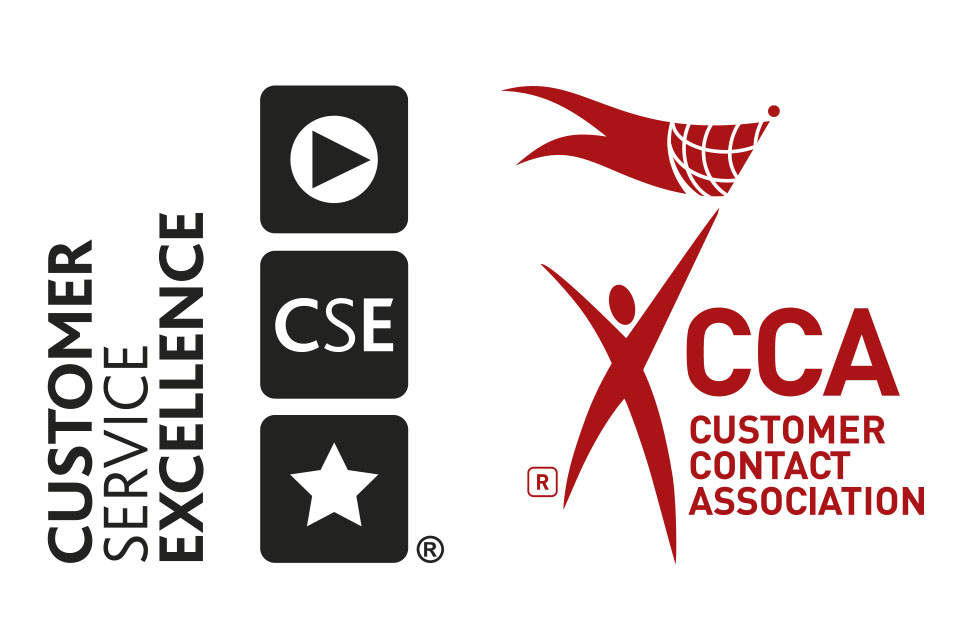
Our 1,000 person strong contact centre handles around 21 million calls, 350,000 webchats and over 500,000 emails a year. We will continue to review our call handling processes using our speech analytics intelligence to deliver even better customer service.
The development of a staff hub in 2019-20 will ultimately provide our staff with a more efficient system to use when dealing with customer enquiries. This will realise benefits of shorter call times and improved service.
Customer insight
We develop services based on the needs of our customers and regularly conduct user research using:
- customer surveys
- in-depth interviews
- focus groups
- targeted usability
- technical and prototype testing.
We use our established network of groups and forums across our customer base to ensure that we gather evidence from our different customer groups.
Our state of the art, purpose-built user experience (UX) testing lab allows us to test our services with customers, providing detailed feedback to help improve our services. We have recently built a Model Office to complement the UX testing lab. The Model Office is a collaborative environment to test innovative technology and new ways of working. It will inform our future working environment, innovations in technology and changes to the technical platforms being used, all in house.
We will undertake a significant programme of UX research and design to support the development of driver and vehicles services. We will also carry out research of customer interactions and their choice of channels.
Our corporate customers
In 2019-20 we will continue to focus on the needs of our corporate customers. We will carry on working closely with our corporate partners which include trade associations, motoring organisations, the police, other agencies and relevant medical charities. Our relationships ensure that we continue to provide services and policies that meet their needs. We also work closely with other government departments to share best practice and knowledge, providing services that customers need.
We have established a number of user groups which deal with the requirements of our corporate customers. This collaboration is extremely effective and has brought significant benefits and improvements to the services we offer our corporate customers.
Our Charities Forum, involving 17 major charities, focuses on the specific needs of drivers with medical conditions that could affect their ability to drive. This engagement has helped ensure that our digital services and communications with these customers meets their specific needs.
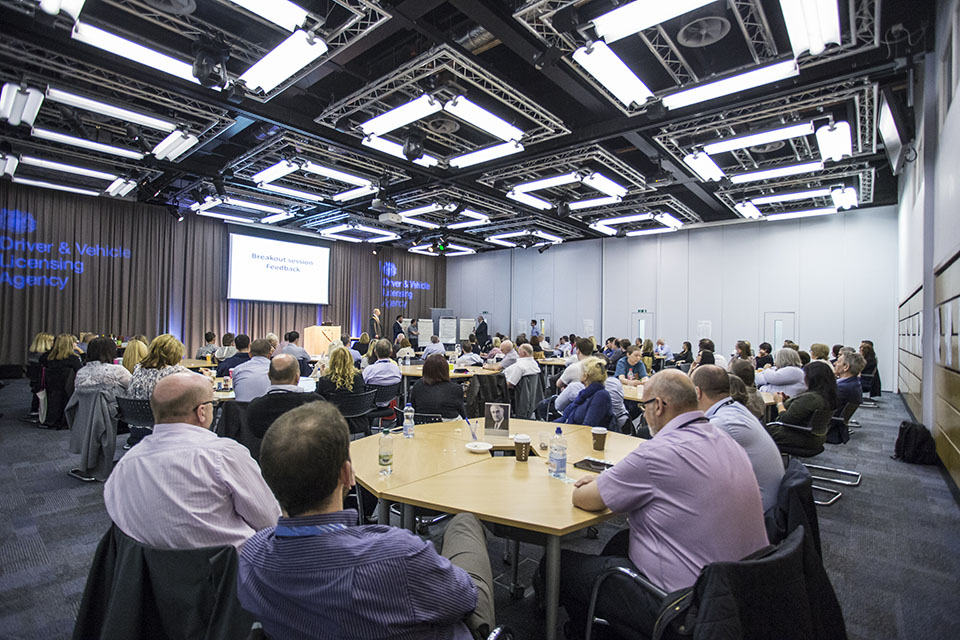
DFT/DVLA commitments 2019-20
| Freedom of Information Act – provide a response within 20 working days | 93% |
|---|---|
| Parliamentary questions – provide a response by due date | 100% |
| Ministerial correspondence – provide a response within 8 working days | 95% |
| Official correspondence – provide a response within 20 working days | 80% |
| Prompt payments – payment of invoices within 5 working days | 80% |
3. Delivering the plan
Financial responsibilities
This is the final year of our Spending Review 2015 commitment to reduce spending. This review is efficiency-driven and sets a target to reduce our budget from DfT by 34% in this final year compared to the 2015-16 baseline. This equates to an annual expenditure reduction of £100 million by 2020.
We expect to exceed this target in 2018-19, including achieving sustainable savings through:
- moving away from a large scale IT contract and reducing IT consultancy resources and costs
- managing the transition of alternative IT platforms predominately in-house
- realigning software licence requirements to changes in business needs.
Other savings include:
- reducing project capital costs which, as well as the end of life of significant legacy assets, reduced the depreciation cost
- introducing new online services, increasing take-up of existing services and negotiating contract efficiencies to reduce intermediary costs.
During 2019-20 we will face a number of cost challenges through our commitment to migrate away from our legacy systems and transform our business and also through the continued work to modernise our estate.
Commercial
We provide commercial, procurement and business development leadership at a strategic and operational level, reducing non-staff costs and seeking opportunities to develop DVLA services.
In 2019-20 we expect to award or renew around 150 commercial arrangements. These will include a new polycarbonate card contract and a new foreign operator payment system (HGV Levy) contract.
We will continue to support GDS Notify as their print and mail provider and provide ongoing commercial support for our IT Transformation programme.
3.1 Modern workplace and skills
As one of the largest public sector organisations in the area, we employ over 5,500 staff based in Swansea. We are committed to our responsibilities as an employer supporting, developing and enabling our staff to progress their career at DVLA. We support the growth of digital skills in the region and have close links with local schools, colleges and universities to develop the right skills needed for sustainable job opportunities.
We do this by:
Civil Service People Survey
We will meet our requirements set out in the Civil Service HR and Estates strategies and use the feedback from the annual Civil Service People survey as a basis for our action plan.
Skills and talent
To support our transformation plans, we will increase the portfolio of specialist IT skills by offering apprenticeships and trainee opportunities across a range of roles.
We will embed our new performance management process and implement the new reward arrangements for this year, which will increase the use of in year rewards.
Modernising the workplace
We will continue to modernise our estate including improving our on-site catering facilities to provide a better environment for staff. This also includes ensuring staff have access to the equipment and technology they need to work more efficiently as we progress through our transformation programme, ultimately passing the benefits onto the customer.
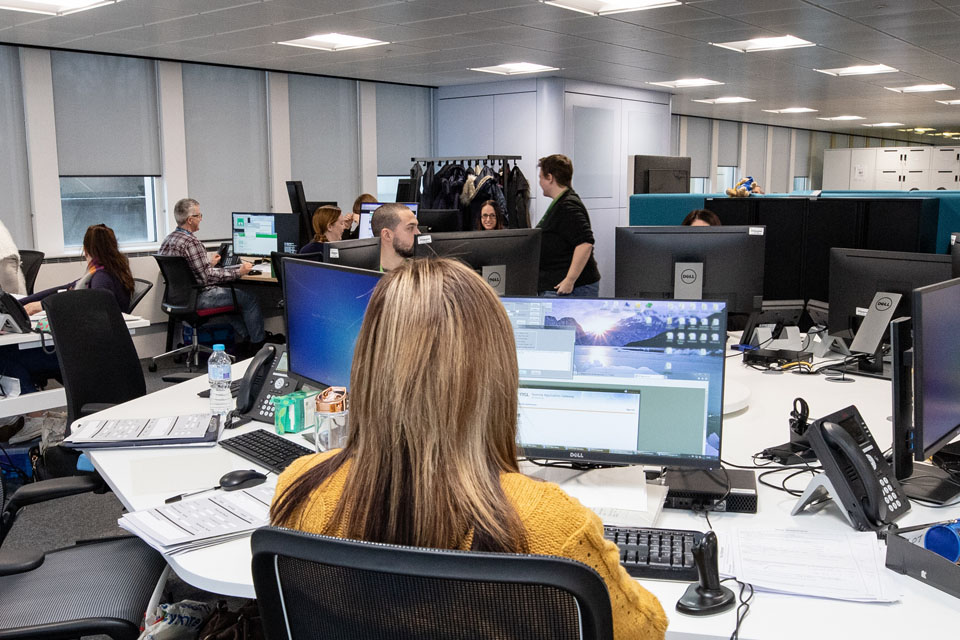
Support for staff
We will continue to focus on reducing the number of working days lost by staff due to sick absence using accurate management information and trend analysis.
Our priorities for supporting staff remain high on our well-being agenda. We will build on our programmes championing the importance of good physical and mental health. This will include:
Piloting the ‘Prevail’ mental health education programme in partnership with Swansea University. Implementing recommendations from the menopause research also carried out with Swansea University; raising awareness of our health and well-being facilities on site through internal communications campaigns; and supporting financial well-being through on site advice services.
Sustainability
Greening Governments Commitments
This is the final year of the Greening Government Commitments set out in 2014-15. Our commitments include reducing the:
- amount of emissions we produce from our buildings and travel
- water we consume
- waste we create.
We will continue to identify areas where further reductions and savings can be made in our estate by:
- replacing our lighting with energy efficient LEDs
- improving the way we heat and cool our buildings
- improving technology to reduce water consumption.
Carbon emissions
We currently provide cleaner and cheaper energy using our Combined Heat and Power (CHP) plant at our Morriston site. This also provides heating and cooling for the estate. Previous studies are being further developed to achieve optimal usage, with a view to making the site smarter which will increase efficiency and reduce emissions. We are looking to integrate this with a wider optimisation of the plant for improved resilience, monitoring and control.
Water
Water saving technology continues to play an important part in our water reduction strategy. We are currently exploring if advanced humidifier technology within our production areas will have a positive impact in reducing water consumption.
Paper waste
Paper is a significant waste stream for us and has a detrimental impact on the environment. All our paper is recycled and we aim to reduce its use wherever possible. We have undertaken a number of initiatives to review the amount of paper we use. This proved to be very successful with a reduction of 31 tonnes during 2018-19. During the year, we will continue to review our processes to identify areas for further reduction.
Air quality and the Clean Air Strategy
The government has a commitment to improving air quality across the UK and we have a supporting role to play by:
- providing data to other bodies such as Transport for London (TfL)
- managing our business travel to minimise the impact on air quality
- utilising an electric car fleet and chargers.
Travel
Our electric business cars make up 32% of our fleet and remains above the government’s requirement of 25%. We will maintain this in 2019-20.
Our emissions from business travel account for around 3% of DVLA’s total emissions. We are committed to reducing the impact on the environment and air quality and encourage staff to look for other ways to conduct their business. This includes simple changes such as conference calls and discouraging the use of staff’s own vehicles in favour of the business fleet. We continue to explore further ways to encourage the cleanest, most efficient modes of transport on any business journey.
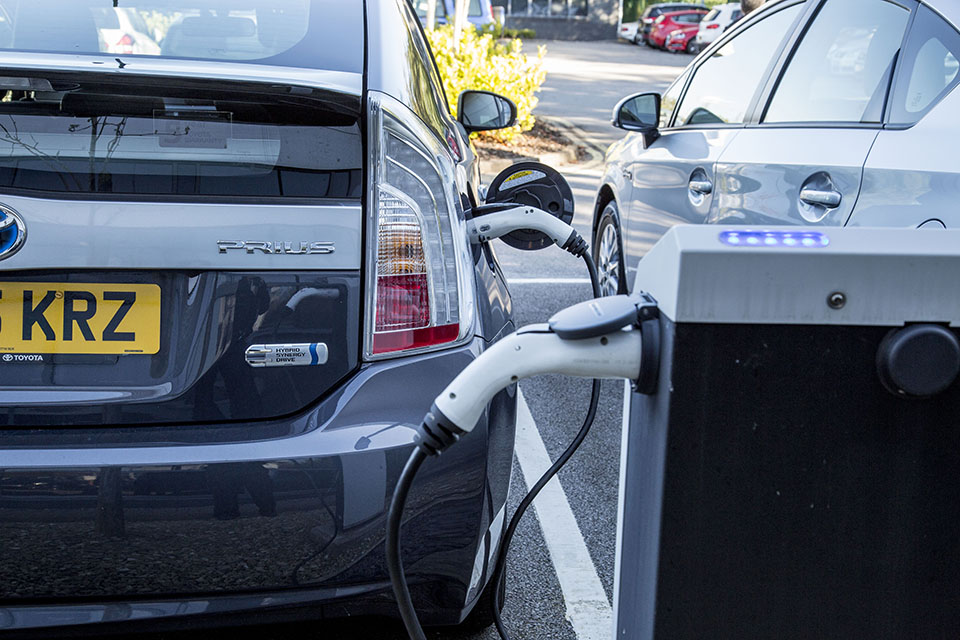
Single-use plastics
We are committed to remove all single-use plastics from our estate. Most of this is used in our catering services.
Our current plan for replacement or removal include:
- replace disposable takeaway cutlery with metal cutlery
- replace plastic food containers with cardboard alternatives
- remove single use plastic disposable cups
- water bottles – water fountains with paper cups on request
- staff will be encouraged to use their own bottles and cups.
For more information see DVLA’s Sustainability Report.
4. Annex A
| Financial forecast | Forecast outturn 2018-19 £ million |
Business Plan 2019-20 £ million |
|---|---|---|
| Statutory fee income | 415 | 426 |
| Commercial fee income | 116 | 116 |
| Other income | 19 | 18 |
| Total income | 550 | 560 |
| Staff costs | (182) | (198) |
| Agents’ fees | (77) | (80) |
| ICT charges | (60) | (54) |
| Accommodation | (27) | (32) |
| Consultancy and professional services | (3) | (4) |
| Postage and printing | (42) | (44) |
| Depreciation | (10) | (7) |
| Other costs | (17) | (22) |
| Total expenditures | (418) | (441) |
| Net operating surplus | 132 | 119 |
| Resource DEL | 83 | 92 |
| AME | (3) | (2) |
| Total resource and AME | 80 | 90 |
| Capital | 12 | 16 |
| Statement of financial position | Forecast outturn 2018-19 £ million |
Business Plan 2019-20 £ million |
|---|---|---|
| Non-current assets | ||
| Property, plant and equipment | 63 | 67 |
| Intangible assets | 19 | 23 |
| Trade and other receivables due after more than one year | 0 | 0 |
| Total non-current assets | 82 | 90 |
| Current assets | ||
| Trade and other receivables | 27 | 31 |
| Cash and cash equivalents | 53 | 51 |
| Total current assets | 80 | 82 |
| Total assets | 162 | 172 |
| Total liabilities | (78) | (74) |
| Total assets less current liabilities | 84 | 98 |
| Non-current liabilities | (24) | (19) |
| Assets less liabilities | 60 | 79 |
| Taxpayers’ equity | ||
| General fund | 8 | 27 |
| Revaluation reserve | 52 | 52 |
| Total taxpayers’ equity | 60 | 79 |
5. Annex B
| Volume forecast | 2018-19 Outturn (000’s) |
2019-20 Forecast (000’s) |
|---|---|---|
| I want to register a vehicle | 3,032 | 2,961 |
| I want to tax my vehicle | 47,431 | 47,595 |
| I want to notify DVLA of SORN | 3,506 | 3,613 |
| I want to notify DVLA that I have acquired or disposed of a vehicle | 11,370 | 11,650 |
| I want to request a vehicle registration certificate | 1,692 | 1,620 |
| I want to amend my vehicle registration details | 8,641 | 8,642 |
| I want a provisional driving licence | 1,007 | 995 |
| I want to amend my driving licence details | 2,985 | 2,912 |
| I want to exchange my GB driving licence | 120 | 114 |
| I want to renew my driving licence | 4,234 | 5,098 |
| I want to replace my driving licence | 951 | 951 |
| I want a digital tachograph card | 55 | 55 |
| I want to renew a digital tachograph card | 126 | 117 |
| I want to enquire on my driver details | 21,022 | 22,473 |
| I want to enquire on my vehicle details | 991,573 | 555,712 |
| You want to enquire on a driver’s details | 48,341 | 56,317 |
| You want to enquire on a vehicle details | 7,797 | 7,648 |
| I want to buy a personalised vehicle registration number | 400 | 385 |
| I want to assign a vehicle registration number to a vehicle | 1,007 | 1,012 |
| I want to retain a personalised registration number | 902 | 934 |
| I want to know how to do something | 14,079 | 14,467 |
| You want DVLA to produce items on your behalf | 2,953 | 2,622 |
